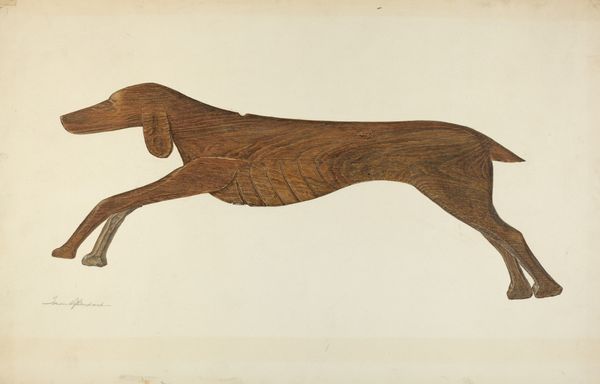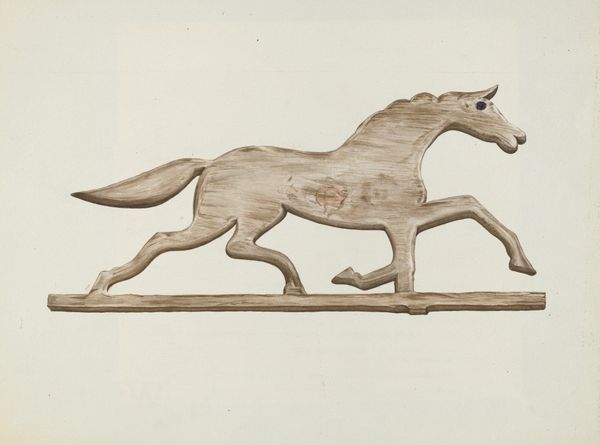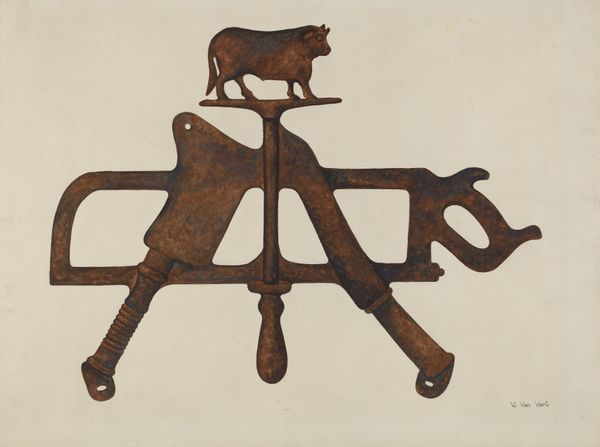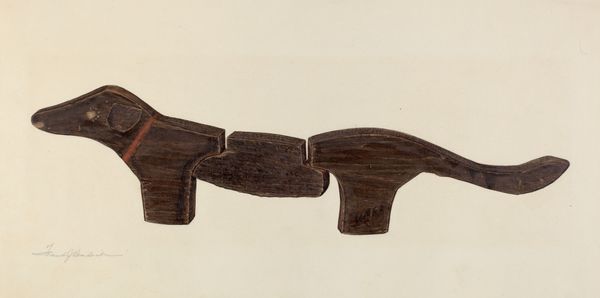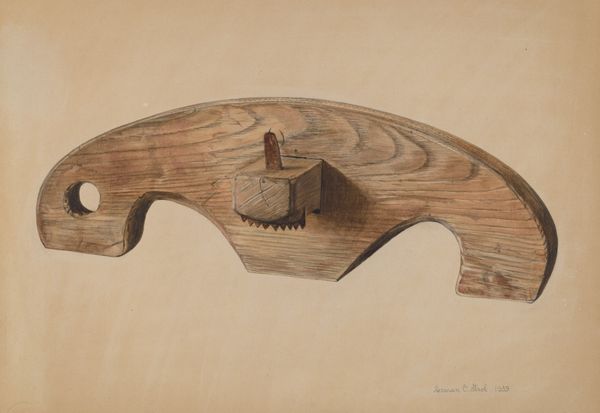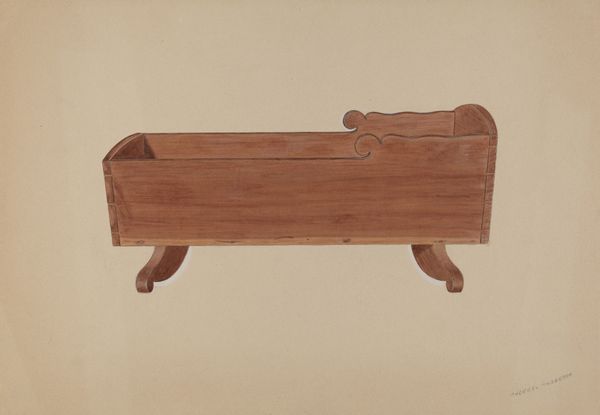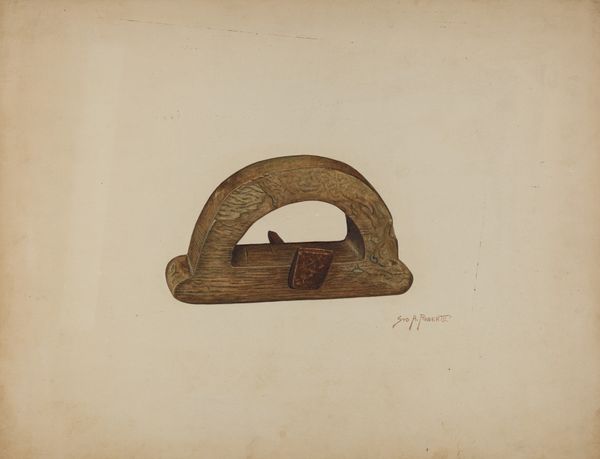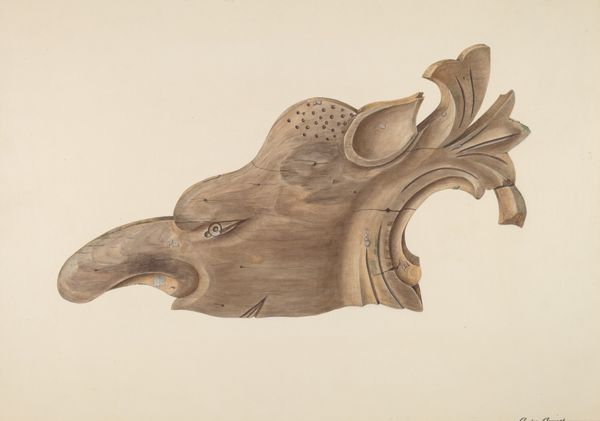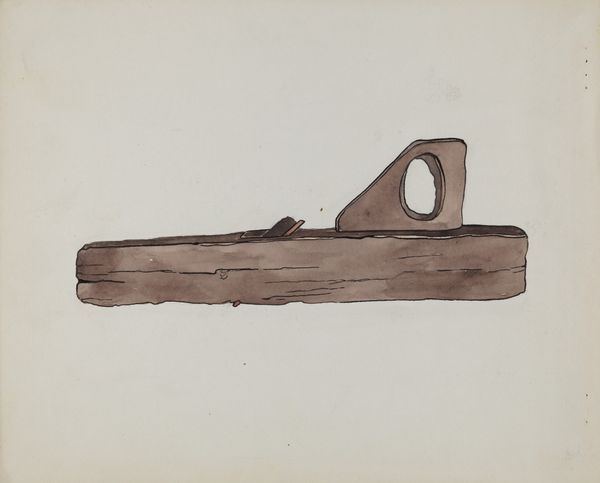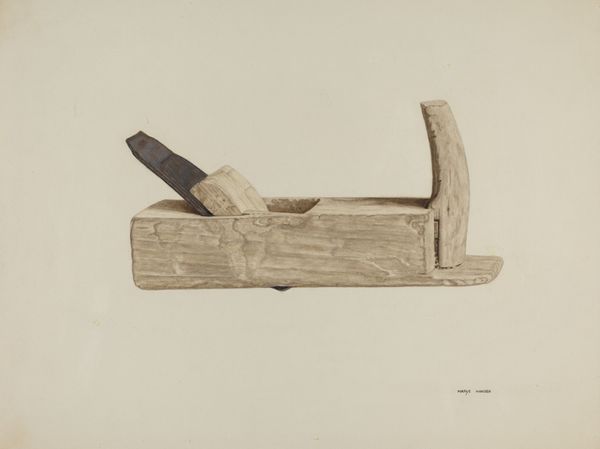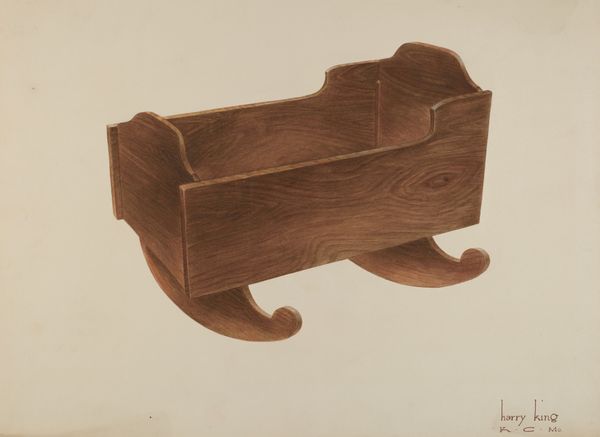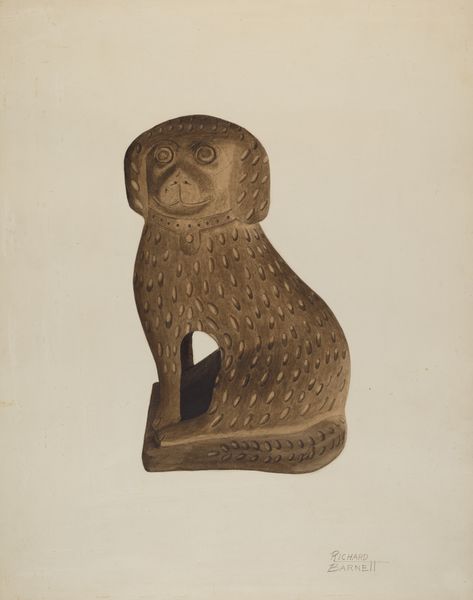
drawing, paper, wood
#
drawing
#
figuration
#
paper
#
wood
#
watercolour illustration
#
watercolor
Dimensions: overall: 24.6 x 35.6 cm (9 11/16 x 14 in.) Original IAD Object: 10" long
Copyright: National Gallery of Art: CC0 1.0
Editor: This is "Squirrel Weather Vane," a drawing by Mildred E. Bent created between 1935 and 1942, using watercolor and drawing on paper. I'm really drawn to the simple, almost childlike, quality of the image. What strikes you when you look at this piece? Curator: What I find immediately compelling is the interplay between flatness and implied form. The overall composition is undeniably two-dimensional, rendered on paper in watercolor, yet Bent manages to suggest the three-dimensionality of the woodblock it depicts through subtle variations in tone and texture. Note how the artist’s delicate brushstrokes outline the texture of the wood grain, which emphasizes the tactile nature of the depicted object. Editor: So you’re saying the medium works in tension with the subject matter, where the goal seems to be bringing attention to form? Curator: Precisely. The success of the drawing relies heavily on its ability to communicate a tactile wooden object through visual means. Bent invites us to consider how we perceive and translate materiality through art. Do you observe how she establishes rhythm in the squirrel’s dynamic pose, counterpointing the squirrel with a heavy tail? Editor: I see it now! The curve of the tail against the straight lines creates a clear sense of motion, which contrasts the rigidity of the wood material she's representing. Curator: Bent uses pictorial methods, the contrast and comparison of texture and form, to arrive at the core identity of the squirrel weather vane. She lets us focus on those things. Editor: This gives me a whole new appreciation for how artists can play with our perceptions! The visual language creates so much meaning. Curator: Exactly. A careful examination allows us to notice a piece’s basic visual components, which yields a better understanding of its significance.
Comments
No comments
Be the first to comment and join the conversation on the ultimate creative platform.
